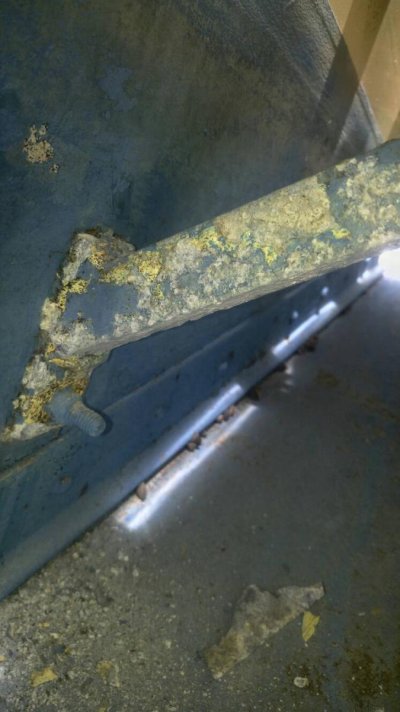mbevins
Guru
Finally getting around to putting my center console in the water. Better late than never I guess.
As I was prepping and cleaning I came what looks like an electrolysis problem. The swim platform is supported from 1" sq aluminum tubes. If you look at the picture you'll see the paint and the anti fouling is blown through and it looks like pitting on the surface. This is in the Great Lakes so it's freshwater.
I've owned the boat for about ten years and this is the first time something like this has shown up.
It's a straight i
 nboard, technically I do keep shore power on the boat. I have a built in battery charger that I have plugged into a 15amp recpt on the dock.
nboard, technically I do keep shore power on the boat. I have a built in battery charger that I have plugged into a 15amp recpt on the dock.
The starboard side which is against the dock seems to be worse than the Port.
I'm thinking it might be an external issue, likely the boat on the other side of the dock.
Does anyone have any thoughts?
As I was prepping and cleaning I came what looks like an electrolysis problem. The swim platform is supported from 1" sq aluminum tubes. If you look at the picture you'll see the paint and the anti fouling is blown through and it looks like pitting on the surface. This is in the Great Lakes so it's freshwater.
I've owned the boat for about ten years and this is the first time something like this has shown up.
It's a straight i
The starboard side which is against the dock seems to be worse than the Port.
I'm thinking it might be an external issue, likely the boat on the other side of the dock.
Does anyone have any thoughts?

